
Non-League Legends: Vik Maslov, Bobby Moore and The Birth of Modern 4-4-2
When one thinks of “simple” football, English 4-4-2 usually comes to mind. A long-time favourite formation in Albion, its origin was mistakenly, credited to Sir Alf Ramsey. It was also associated with the transition to modern football. A game that is currently, single-mindedly obsessed with possession, relentless pressing and teamwork. But what led us to the world where Gegenpress has become a household word? The answer is simple. It all began with Viktor Maslov and the Soviet invention of the 4-4-2. The innovation that gave birth to modern football as we know it today.
My ongoing Non-League Legends FM21 Series will be covering everything about 4-4-2. From its secret history to everything you need to know before setting up this formation in Football Manager 2021. The prologue can be found here:
Birth of Modern Football
Some saw the modern game begin when teams stopped playing with 8 strikers and 3 half-backs sometime in 1920s. The emergence of more balanced, defensively-responsible formations definitely helped. Jonathan Wilson in Inverting the Pyramid agrees that Maslov’s invention of 4-4-2 signaled the start of a new football era. This formation gave much needed balance to allow for more complex possession-based pressing style of play. A style of play, that over the years has become so popular that it’s now used by most elite clubs. Even if they do not necessarily play with 4-4-2 anymore.
When 4-4-2 was first used by Sir Ramsey it revolutionized the English game. It also helped England win its first, and so far the only, World Cup trophy in 1966.
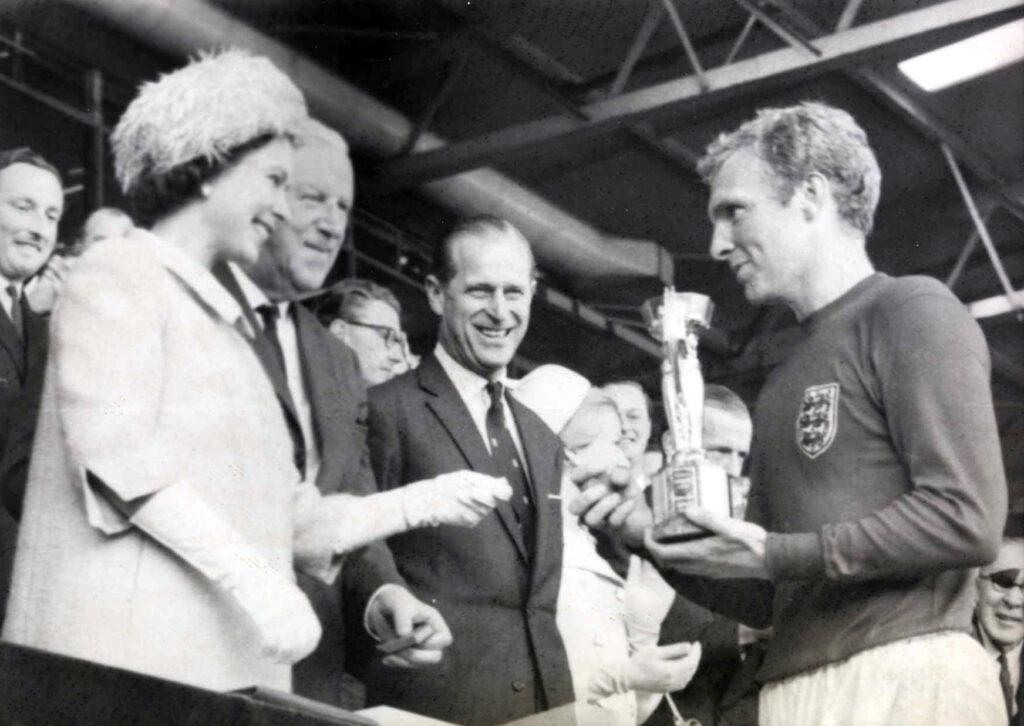
Alf Ramsey is often credited with introducing 4-4-2 to England (where it thrived for years). But he certainly wasn’t the first to come up with this formation. Although Ramsey-led 1966 World Cup winning team, dubbed “Wingless Wonders”, definitely helped in popularizing the formation. And in the years since 1966, the influence of 4-4-2 became so far-reaching that it spawned a number of other formations (like 4-2-3-1). But few know that it was not first conceived in England. Although Ramsey might have thought of it on his own. I don’t want to take anything away from this brilliant manager. But the fact of the matter remains. There was another legendary manager who saw the benefits of using two banks of four before Ramsey did. And he was born far to the east, behind the Communist Iron Curtain. His name – Viktor Aleksandrovich Maslov.
From USSR with Love
There was something about the Socialist mentality and work ethic that differentiated it from the way Western Europe regarded football. USSR’s ideological and physical separation (barbed wire fences and such) from the West also translated into a significant divide in the sports arena. The football stadium became another battleground where the Communist Superpower could prove its superiority over the “decadent” West. And battle it out they certainly did!
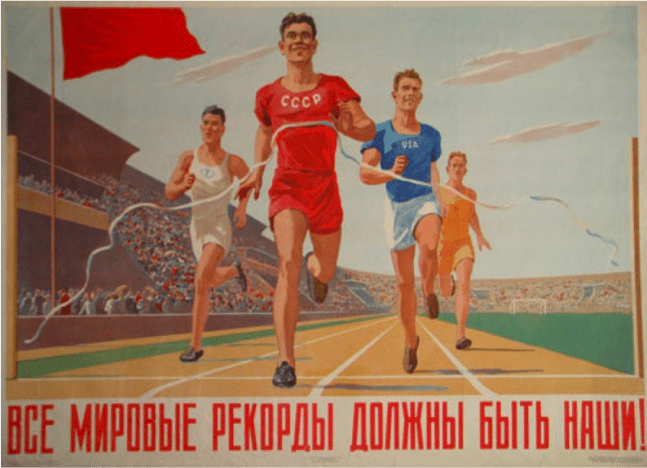
Initially the ideological divide held Soviet Football back. Lack of free movement of ideas with the West European football theorists, arrested the development of the game in USSR. From the Bolshevik Revolution and well into the 1950s, Soviet football continued to develop in an isolationist microcosm. A time capsule of sorts. This was quite apparent on the pitch. The arrival of the first ever football tactic serves as a good example of this.
The most wide-spread formation in history of the sport, the Pyramid or WW, arrived in Russia about the same time as it did in other European countries in late 19th century. But then there was the closing of the ideological gates after the end of the Russian Civil War in 1920s. In line with the directive of the Communist Party leadership, the influx of Western ideas stopped. Even in the arena of sports. This meant that the professional clubs reestablished in Russia and other Soviet Republics kept using that antiquated formation. You see they only played against other clubs from USSR. While the Soviet National Team did not enter the world competition until 1952 Olympics. Thus completion, one of the most important catalysts of innovation, was missing from Soviet football for the longest time.
Working Class Heroes
In the rest of Europe, tactical innovation fueled change both in tactics and training. At same time, in USSR football stagnated. And the formations from 19th century continued being used by Soviet teams until 1950s. That is until Viktor Maslov became manager of Dynamo Kyiv and brought his revolutionary brand of teamwork-focused hard-pressing football. And Maslov’s brand of Totalitarian Football was born.
Football is not an individual sport. Not anymore. Maybe in its very beginning, it was much like baseball, a sport consisting of 11 individual performances. But all that changed since Viktor Maslov and Rinus Michels redefined the rules in broad strokes, forever making “teamwork”, “pressing” and “hard work” integral parts of the football canvas. Thanks to these two geniuses, football has become a systematized game. A game of 11 players operating in tandem to contribute to the greater success of the whole system. Rinus Michels’ Ajax and Dutch National Team helped to popularize this view in the West, labelling it “Total Football”. Yet Maslov was there first.
Viktor Maslov was very much a child of his time and place. Growing up in USSR, it was natural for him to apply socialist hard-working ideals to the sport he loved. Maslov also believed that harnessing the power of hard science. Which he believed could enable the manager to exercise total control over the pitch. Finally, one has to remember that Maslov’s ideas came about before Dutch Total Football. Although they shared a similar focus on pressing and teamwork. Yet Maslov started using these concepts years earlier, and with much success, at Dynamo Kyiv.
Maslov’s Dynamo and Brazilian Experience
Viktor Maslov took control of Dynamo Kyiv in 1964 and completely redefined its style of play, cementing its place on the map of Europe’s elite clubs. Through the 1960s Dynamo became among the first sides to integrate hard work and team-work in building a perfectly cohesive unit. A unit that while made up of 11 individuals, nevertheless works in tandem as one. A tightknit unit that attacked as one, defended as one and that hunted the ball in packs. In Maslov’s Total Football prototype the brilliance of an individual, is always secondary to the team. An idea later echoed by the Dutch in the 1970s. But while Johan Cruyff became equivalent if not greater than Total Football, no single name ever stood out in Maslov’s Dynamo. Their collective brilliance overshadowed the individual parts.
But what were the parts that made up Maslov’s brilliant 4-4-2?
Like many managers in the late 1950s, Maslov was inspired by the Brazilian 1958 World Cup winning team. At the time, the Brazilians played with their famous 4-2-4 formation. It was a perfect example of an attack over defence approach. Brazilians were so brilliant in their attack that their opponents simply could not handle them. When faced with two strikers (one being no other than Pele), two attacking wingers and wingbacks, can we blame them? Soviet Union also had no answer to Pele and Brazilian prowess in attack.
Maslov realized the power of Brazil’s tactics when witnessing USSR’s defeat against them in 1958. Yet he saw ways in which he could improve 4-2-4 to make into an even better, more balanced shape. Such as filling the gaping holes on the wings between the wingbacks and the wingers, an inherent flaw of 4-2-4. It also made the Brazilian-style 4-2-4 a less optimal choice for teams not filled with world-class attackers, like Pele.
So Maslov decided to make some changes to make this formation fit his Dynamo Kyiv squad. His aim was to maintain the majority of the formation’s attacking intent while making it more solid in defence. The 4-4-2 was the result.
The changes that Dynamo’s manager made included instructing both of the advanced wingers to drop deeper. This was to help out the two midfielders and to link better with the fullbacks. The introduction of the flat bank of four in midfield was key to 4-4-2 balance. As such Maslov’s modified 4-2-4 got the balance right between defense and attack. Due to the increased number of bodies in midfield possession and transitional play became easier. And also got rid of the 4-2-4’s main flaw, gaps on the wings. At the same time the increased midfield allowed the fullbacks to operate more offensively along the Brazilian wingback model. That is with the wingers defending and pressing ahead of them, wingbacks could make more forward runs.
Pack Hunters
Their [Dynamo Kyiv] midfield was hunting in packs, closing down opponents and seizing the initiative in previously unexpected areas of the pitch.
Jonathan Wilson in Inverting The Pyramid
Secondly, Maslov’s decided to rely on hard work and teamwork over Brazil’s individualistic Jogo Bonito. By late 1960s football was moving away from the overreliance on individual brilliance to a more tactical approach. In order to win, teams really needed to use all of their available resources. And not just putting their most talented attackers in front and charging the opponent like in the old pyramid formation. Maslov admired Pele for almost single-handedly beating USSR’s national team in 1958. But he preferred to have 11 average players working as one well-oiled, efficient footballing machine. Rather than having 11 Peles playing as individuals.
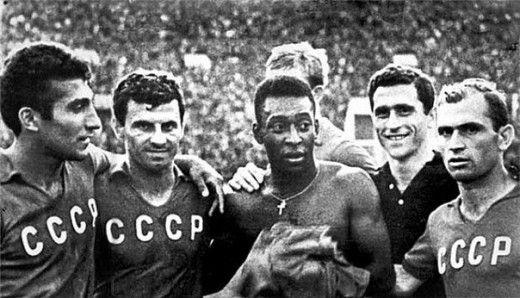
Maslov discovered with Dynamo Kyiv, that even the best footballers could be shut out of the game. Specifically, when you assigned several players to mark the zones where star players such as Pele liked to operate. The Russian created the system of pressing aimed at not allowing the opposition any space and time on the ball. And the 4-4-2’s two banks of four set-up proved ideal for this zonal marking and pressing system. USSR national team’s defensive play became notorious in international competitions in 1960s. And Maslov’s Dynamo had a lot influence on the national team. Dynamo Kyiv proved to be by far the most successful club in Soviet top league during the 1960s.
Football purists may blame Viktor Maslov for stemming the tide of attractive attacking football of the late 50’s and early 60’s by the introduction of hunter pack pressing. But while Jogo Bonito died, Total Football was born. And football has never been the same ever since. The game we watch and play today owes a lot to Comrade Maslov.
Going Back To The Future
In the current era of pressing, top half clubs with more funds, top notch academies and scouting departments can afford to create highly-technical sides that aim to short-pass their way through the opposition press. Although this might not work every time. Just look at Barcelona debacle last season in Champions League against Bayern. In general, lower to mid-tier clubs with smaller budgets tend to struggle in attracting the kind of playmaking talent required for this patient possession approach. Thus LLM sides tend to invariably go for a more simple, direct approach.
In modern football, tactics have increased in complexity. And this led people to sometimes look down on the “old-fashioned” 4-4-2 formation. The critics write it off as too primitive for the needs of high pressing, possession football. However, such simplicity also keeps 4-4-2 formation relevant through history and changing tactical trends. Some of its timeless advantages are as follows.
1. Two Strikers
The prime advantage of a 4-4-2 system. It plays into 4-4-2’s strength in the box while downplaying its weakness in the midfield. Furthermore, using two strikers instead of one compensates for the lack of elite goal-scorers and playmakers. It helps to bypass the opposition press through long balls, taking control away from opposition playmakers and forcing them into physical duels. The playmaker’s skill On The Ball will have less of an influence on the game if the ball spends the majority of time flying above his head. Finally, using two strikers allows for two players with dramatically different skill sets. And this can be an advantage in a league lacking in complete strikers. Thus matching a pure goal-scorer, who is not capable of much else, with a tall striker good at playmaking, could create a deadly striker duo. While either one alone wouldn’t normally be all that exceptional.
2. Role Flexibility
Unlike 4-3-3, which I covered extensively in FM20, 4-4-2 does not require many specialized roles. Thus 4-4-2 shape is rather easy to set up in Lower Leagues with less talented personnel. And much easier to manage for players new to Football Manager series. On the other hand, setting the role for the lone striker, wingers, or the midfielders can all make or break 4-3-3. While your typical 4-4-2 formation allows more role flexibility.
For example, it accommodates a greater variety of player profiles. As I mentioned above, you could mix and match numerous striker types for the duo upfront. There is really no wrong combo. You could even go with two goal-scorers, provided they get adequate support from the wings and midfield. And speaking of the midfield and wingers. You could use fast and agile wingers to cross endlessly to the strikers, or play a central midfielder type there for added defensive solidity on the wings. Or to enforce a tireless pressing system.
3. Tactical Flexibility
And here we come to my final point regarding the advantages of the 4-4-2 formation. The ease with which it supports different playing styles. Ranging from the more defensive, counter-attacking football, all the way to high-pressing and technical possession styles. All are possible with this versatile formation. Testament to this is in the variety of tactics that real-life managers have constructed around the 4-4-2. Whether we are discussing the high pressing of Arrigo Sacchi’s Milan to the possession-heavy 4-4-2 used by Carlo Ancelotti. Even Pep Guardiola, the king of 4-3-3, employs 4-4-2 at times.
The reasons why many of today’s best tactical minds choose 4-4-2 over others, are manifold. But it could be something to do with how it is one of the most balanced and versatile shapes. As mentioned above, it’s strong in attack with two strikers. And also solid in defence with its compact lines of four, making 4-4-2 the most straightforward set-up for defensive purposes. No fancy mezzala/regista combos here. If you want an effective 4-4-2 that doesn’t leak goals, a double pivot in midfield is the way to go. And of course with a more defensively-minded midfield you can afford a more attacking intent upfront.
4. High Pressing on a Budget
In the modern era of pressing, teams need to implement some form if it to compete in the top leagues. The old and trusted 4-4-2 makes this easier than ever. Some teams even manage to punch above their budgetary limitations thanks to the direct and high-pressing 4-4-2 shape. Rather fittingly, and forgotten by most, Maslov invented the 4-4-2 to use with the high pressing in mind. Hence, the 4-4-2’s “moderness” at the time. It is one football formation that aged very well, thanks to its tactical suitability to the modern high-intensity football.
The Tactical Evolution
The beauty of 4-4-2 formation is that it can evolve with your team as it progresses up the league ladder. Formations like 4-3-3, that require many specialized roles, cannot be effectively used in Lower Leagues. But as I showed before, 4-4-2 can change to fit the league depending on the players you use. High-intensity pressing football may not be a realistic expectation in England’s National League (5th level in the pyramid). But instead one can use 4-4-2 with a direct approach in mind. As you advance up the leagues, you will naturally get access to more defensively responsible and mentally strong wide midfielders. So then instead of the one-dimensional crossing machines that you used in the lower leagues, you can have your wingers press high. All purely on the basis of their attributes.
Final Note
My plan for this series is to showcase this tactical evolution as my club moves up the English League Pyramid. For sure, Maslov-style system will not be possible from year one, but hopefully after 5-6 seasons, our style will evolve into one that will survive the test of the Premier League. And move onward, from Non-League to the Premier League legends!
Thank you for reading and if you enjoyed, please follow us @ Dictate The Game’s Facebook and Dictate The Game’s Twitter. And here are other articles you might like:
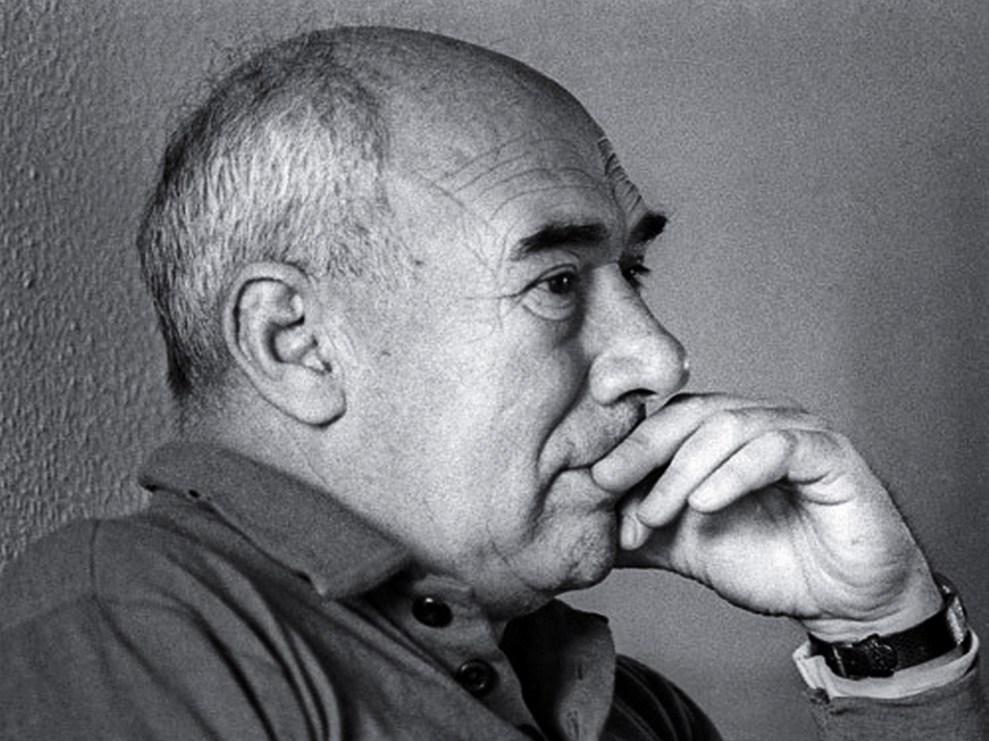
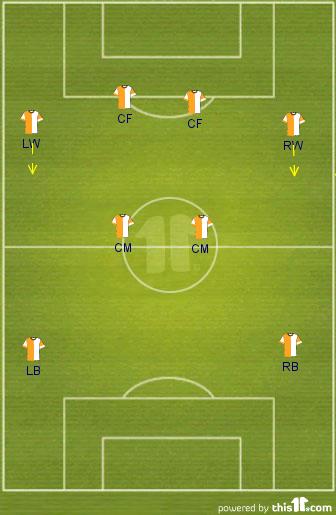



2 thoughts on “Non-League Legends: Vik Maslov, Bobby Moore and The Birth of Modern 4-4-2”
gran artículo..
seria bueno mostrar esquema táctico y su progresión ….
gracias.